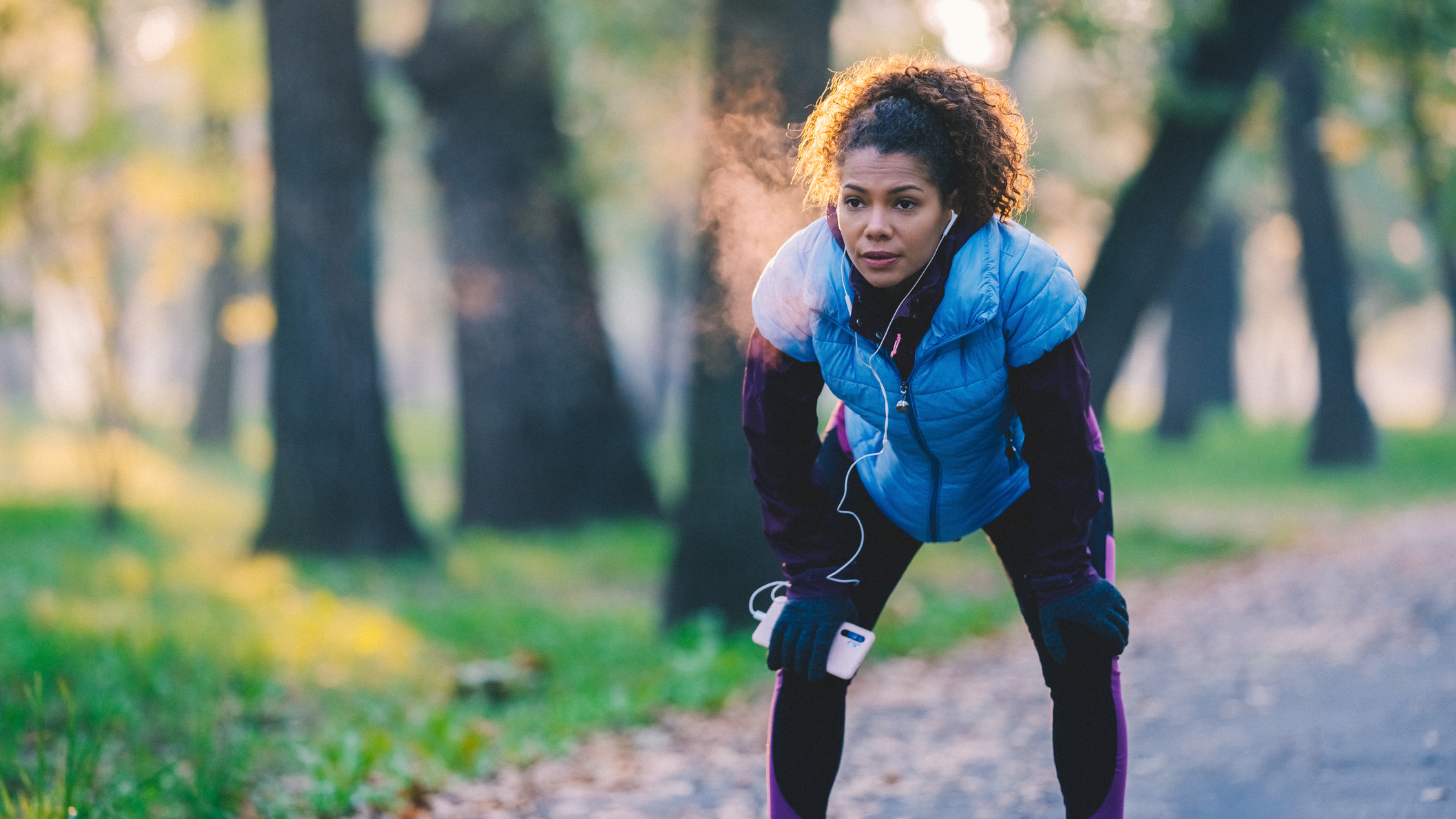How To Breathe While Running: The Answer To The Nose Vs Mouth Debate
Here’s what the science says about nasal breathing while running

Breathing while running might seem like a natural thing to do, but some runners find it difficult to get a handle on, particularly when the intensity increases.
They can find themselves gasping for air as they run uphill or when they try to speed up and reach a new 5K PR.
In recent years the idea of nasal breathing being superior to mouth breathing has gained currency. But according to leading sports scientist Professor John Brewer, editor of the book Running Science, the nasal breathing movement is based on a myth with no scientific basis.
We spoke to Brewer to unpack the mouth versus nose breathing debate.
Professor John Brewer was the first qualified sports scientist to work in English football as head of human performance for the Football Association before running his own sports science and injury business for 15 years. He went on to work at GlaxoSmithKline Plc where he was responsible for research and sport science education for Lucozade Sport. He has worked in senior leadership roles at a number of UK universities and held board level roles at London Regional Sports Board, British Universities and Colleges Sport and UK Anti-Doping. Brewer has written several evidence-based books including Running Science, Run Smart and the Official London 2012 Training Guide To Athletics. He is a keen runner, hill walker and skier.
Should I breathe through my mouth or nose while running?
It is very easy to “overthink” breathing, says Brewer, but we should avoid doing this because our bodies are actually good at deciding the best way to operate. The body will naturally go for the route of least resistance and Brewer says unequivocally that this is oral breathing.
“When ventilation rates exceed about 40 liters per minute of air going in and out of the lungs, the route of least resistance is through the mouth,” he says.
For many people, moderate- to high-intensity exercise will require 80 to 100 liters per minute and breathing without resistance can only be done via the mouth.
“Lots of studies have shown that oral breathing is the easiest way of getting large amounts of air and therefore oxygen into the lungs. It is, without any doubt, the route of least resistance to get air in and out of the lungs,” Brewer says.
Get the Coach Newsletter
Sign up for workout ideas, training advice, reviews of the latest gear and more.
“In low- and possibly moderate-intensity exercise, nasal breathing can deliver air to the lungs effectively. But as exercise intensity increases, oral breathing becomes the route of least resistance for high ventilation rates, which can approach and often exceed 100 liters per minute.”
And the reason for this is straightforward. The mouth is simply a bigger passageway than the nose.
“If you open your mouth you can create more of a tunnel than two nostrils together. If you watch any race you will see when athletes are exercising at a high level they will be breathing in and out through their mouth,” Brewer says.
But what about nasal breathing?

Even with the use of nasal dilators to open up the nostrils, nasal breathing still provides far more resistance.
“If you are running hard and getting breathless, try closing your mouth and breathing through your nose. You will really struggle to support that high-tempo exercise because there is far more resistance from nasal breathing than there is from breathing from the mouth,” says Brewer.
He believes the trend towards nasal breathing was set in motion by the selling of nasal dilators, which are meant to make it easier for people to breathe out of their noses.
Research seems to back up his claim that nasal dilators are ineffective in improving performance. An independent study of Breathe Right nasal strips tested whether the product enhanced running performance as measured by maximal ventilation, maximal oxygen uptake and maximal heart rate. The researchers concluded that the nasal strips were “ineffective in enhancing performance”.
Another study looked at whether nasal breathing had benefits during high-intensity exercise even if a greater volume of air was transported through the oral passageway. It concluded that “it is likely that oral breathing represents the more efficient mode, particularly at higher exercise intensities”.
An additional reason oral breathing is important is that it is a mechanism for heat loss, although a much less significant one than sweating.
“In the summer, when body temperature will be increasing quite significantly as you run, breathing out through the mouth is an important way of losing heat,” says Brewer.
Is it ever a good idea to breathe through the nose?
When exercising at a low intensity, nasal breathing can be an effective way to calm down and relax, says Brewer.
“It can potentially get you into a rhythm, but at anything more than a low to moderate intensity it’s just a myth that nasal breathing helps,” he says.
As a tool for recovery once you stop running, nasal breathing can help you calm down and “move from panting to controlled breathing”.
But although it may create a psychological calming effect, nasal breathing does not lower heart rate.
“Your heart rate is dictated by the amount of oxygen that you need to get to your muscles. That in turn is dictated by the effort you are putting in,” explains Brewer. “If anything, breathing in and out of your nose will potentially raise your heart rate because the heart would have to beat harder to pump more blood and oxygen around the body.”And trying to change your natural breathing pattern is probably not a good idea because our body is already regulating itself as efficiently as possible.
“Breathing is not just about getting oxygen in, it’s also a very important mechanism for getting rid of carbon dioxide. And if you don’t get rid of carbon dioxide you’ll see lactic acid levels increase. So the body has sensors that are good and efficient at regulating breathing rate to ensure that we exhale and get rid of it.
“We can sometimes overcomplicate something that is a very well designed, physiological mechanism. If you mess around with it too much you can end up causing a build-up of carbon dioxide or resistance that will reduce oxygen uptake levels and cause more fatigue. It’s often best just to let the body regulate its own breathing, and not think too much about it.”
It's also a myth that nasal breathing enables you to breathe more deeply, says Brewer. This is because depth of breathing is controlled by the intercostal muscles and the diaphragm, which are “totally independent, whether you breathe in through the nose or breathe through the mouth”.
The theory that breathing through the nose warms air before it reaches the lungs is less contested by Brewer—but he questions its significance.
“Yes, it might do [warm the air] because it’s a narrower passageway, but what performance benefit could that bring? Potentially it might reduce the risk of a stitch, but that’s about it. On the other hand, if the lungs are having to work harder to get air in through the nose, that negates [any effect on the avoidance of] any stitch.”
- Read an extract from Running Science

Lily Canter has worked as a journalist for more than 20 years and currently specializes in running and fitness. She regularly contributes to Coach as well as Runner’s World, Well+Good, Fit&Well and Live Science. Lily is a UK Athletics running coach, the founder of the Great Bowden Runners club and a participant in multi-day ultra races. Her biggest racing achievement to date is placing second at the Ultra Challenge 100km in the Lake District. She has a BA in English Literature, an MA in Print Journalism and a PhD in Journalism Studies. She is also co-host of the award-winning podcast Freelancing For Journalists and teaches feature writing, podcasting and freelancing to university students.
